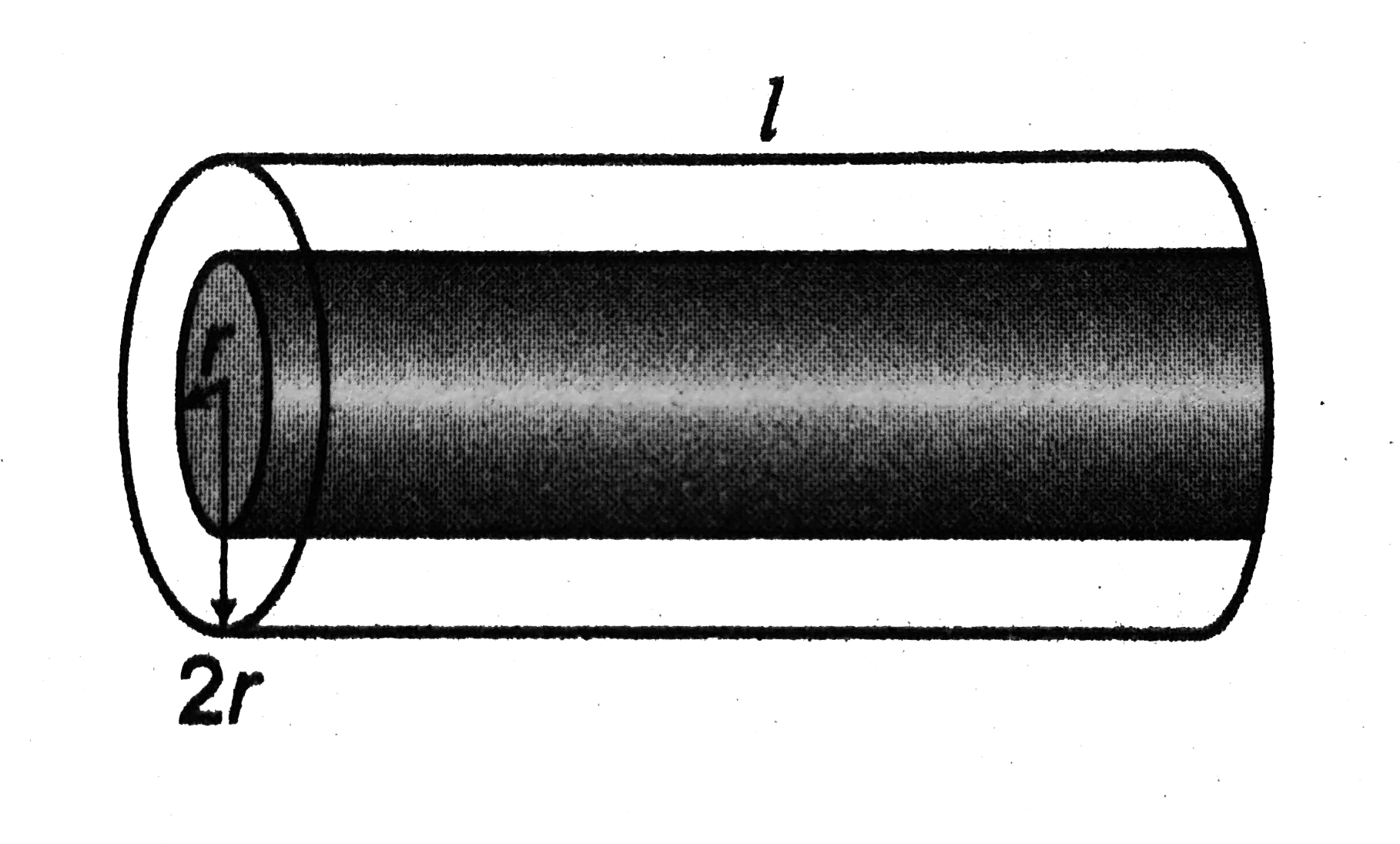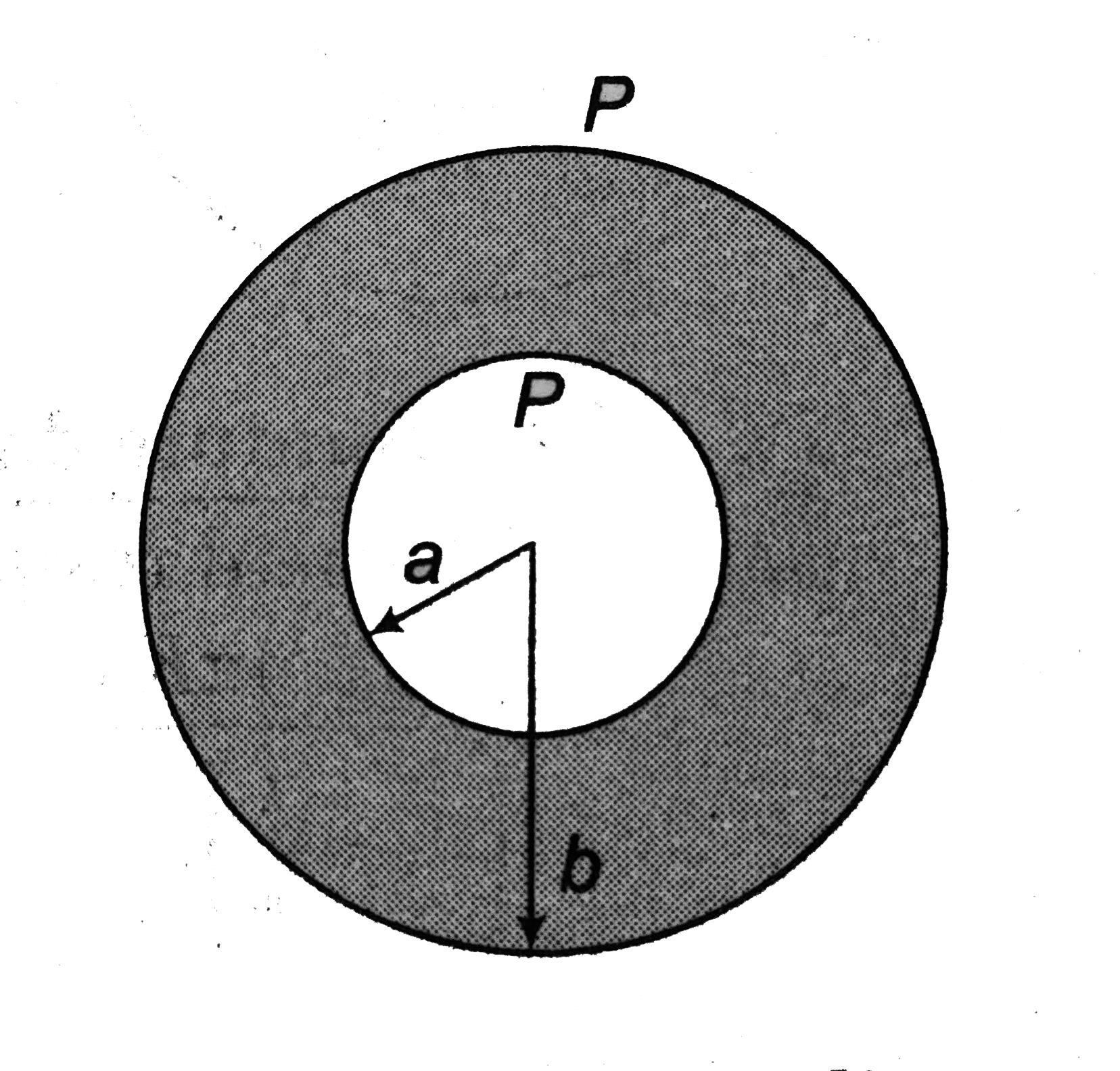Example Type 3 from DC PANDEY PHYSICS (HINGLISH) CALORIMETRY & HEAT TRANSFER for Class 11
| Class 11 | PHYSICS |
| Chapter | CALORIMETRY & HEAT TRANSFER |
| DC PANDEY PHYSICS (HINGLISH) | Example Type 3 |
| Medium | English |
| Academic Year | 2023-2024 |
Question 5
In a container of negligible mass 30g of steam at 100∘C is added to 200g of water that has a temperature of 40∘C If no heat is lost to the surroundings, what is the final temperature of the system? Also find masses of water and steam in equilibrium. Take Lv=539cal/gandcwater=1cal/g−∘C. View SolutionQuestion 7
An ice cube of mass 0.1 kg at 0∘C is placed in an isolated container which is at 227∘C. The specific heat s of the container varies with temperature T according to the empirical relation s=A+BT, where A=100cal/kg−KandB=2×(10−2)cal/kg−K2. If the final temperature of the container is 27∘C, determine the mass of the container.
(Latent heat of fusion for water = 8×(104)cal/kg, specific heat of water =103cal/kg−K).View SolutionQuestion 9
A copper rod 2 m long has a circular cross-section of radius 1 cm. One end is kept at 100∘C and the other at 0∘C. The surface is insulated so that negligible heat is lost through the surface. In steady state, find
(a) the thermal resistance of the bar
(b) the thermal current H
(c) the temperature gradient dTdx and
(d) the temperature at a distance 25 cm from the hot end.
Thermal conductivity of copper is 401 W/m−K. View SolutionQuestion 11
Figure shows a copper rod joined to a steel rod. The rods have equal length and equal cross-sectional area. The free end of the copper rod is kept at 0∘C and that of the steel rod is kept at 100∘C. Find the temperature θ at the junction of the rods. Conductivity of copper
=390W/m−∘C and that of steel =46W/m−∘C.
 .View Solution
.View SolutionQuestion 13
A cylinder of radius R made of a material of thermal conductivity K1 is surrounded by a cylindrical shell of inner radius R and outer radius 2R made of a material of thermal conductivity K2. The two ends of the combined system are maintained at two different temperatures. There is no loss of heat across the cylindrical surface and the system is in steady state. The effective thermal conductivity of the system isView SolutionQuestion 19
One end of the rod of length l, thermal conductivity K and area of cross-section A is maintained at a constant temperature of 100∘C. At the other end large quantity of ice is kept at 0∘C . Due to temperature difference, heat flows from left end to right end of the rod. Due to this heat ice will start melting. Neglecting the radiation losses find the expression of rate of melting of ice.
 . View Solution
. View SolutionQuestion 20
B point of the rod shown in figure is maintained at 200∘C. At left end A, there is water at 100∘C and at right end C there is ice at 0∘C. Heat currents H1andH2 will flow on both sides. Due to H1, water will convert into steam and due to H2 ice will be melted. If latent heat of vaporization is 540cal/g and latent heat of fusion is 80cal/g then neglecting the radiation losses find l1l2 so that rate of melting of ice is two times the rate of conversion of water into stream.
 .View Solution
.View SolutionQuestion 21
Three discs, A, B and C having radii 2m, 4m and6m respectively are coated with carbon black on their outer surfaces. The wavelengths corresponding to maximum intensity are 300nm,400nm and 500nm, respectively. The power radiated by them are QA,QBandQC respectively
(a) QA is maximum (b) QB is maximum (c) QC is maximum (d) QA=QB=QCView SolutionQuestion 24
Two metallic spheres S1andS2 are made of the same material and have got identical surface finish. The mass of S1 is thrice that of S2. Both the spheres are heated to the same high temperature and placed in the same room having lower temperature but are thermally insulated from each other. the ratio of the initial rate of cooling of S1 to that of S2 is
(a)13(b)1√3(c)√31(d)(13)13View SolutionQuestion 25
Two identical conducting rods are first connected independently to two vessels, one containing water at 100∘C and the other containing ice at 0∘C. In the second case, the rods are joined end to end and connected to the same vessels. Let q1andq2 gram per second be the rate of melting of ice in the two cases respectively. The ratio q1q2 is
(a) 12 (b)21 (c)41 (d)14View SolutionQuestion 26
Two metal cubes with 3 cm- edges of copper and aluminium are arranged as shown in figure. Find
(a)the total thermal current from one reservoir to the other
(b) the ratio of the thermal current carried by the copper cube to that carried by the aluminium cube. Thermal conductivity of copper is 401 W/m−K and that of aluminium id 237 W/m−K .
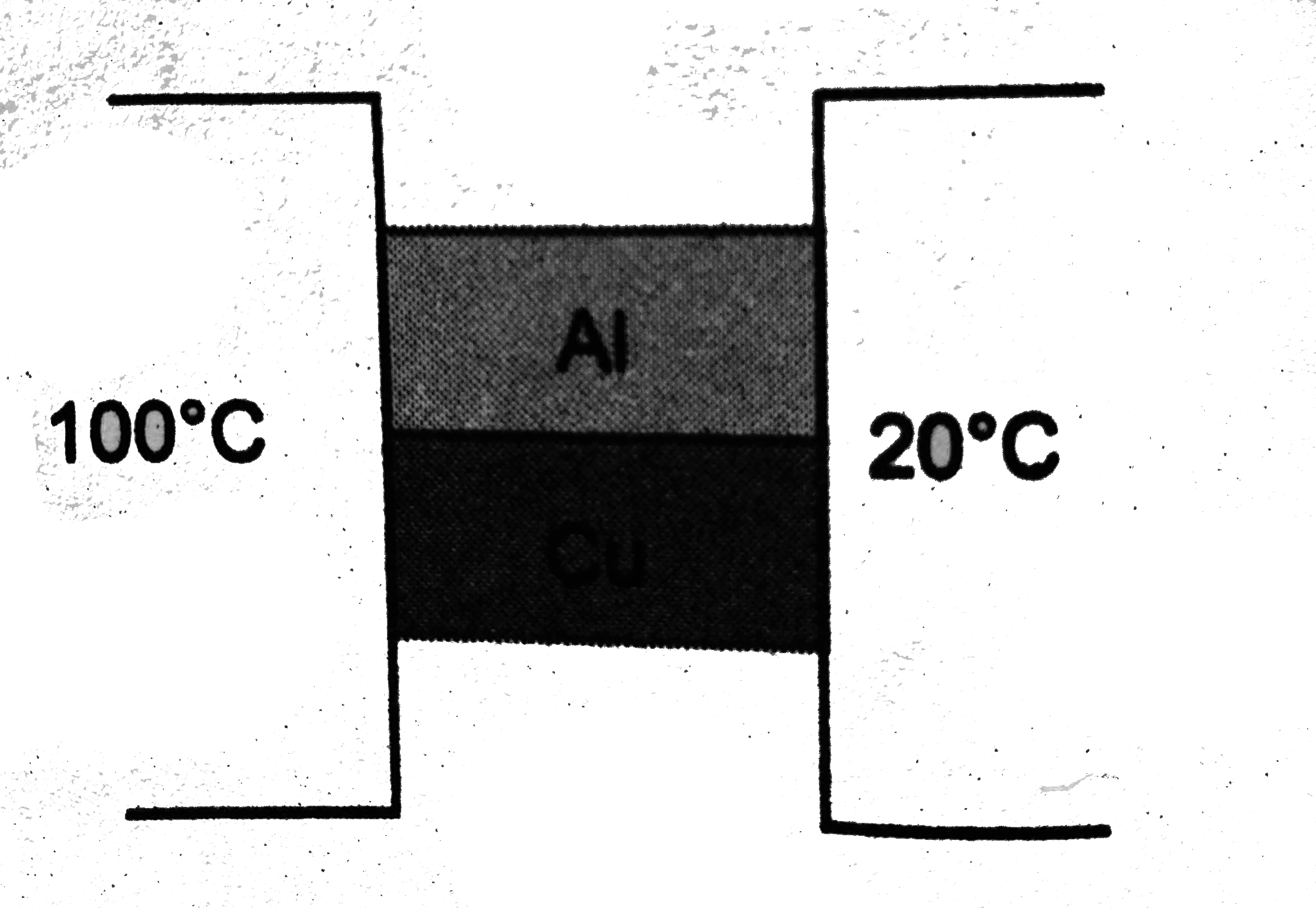 View Solution
View SolutionQuestion 27
One end of a copper rod of length 1 m and area of cross - section 400×(10−4)m2 is maintained at 100∘C. At the other end of the rod ice is kept at 0∘C. Neglecting the loss of heat from the surrounding, find the mass of ice melted in 1h. Given, KCu=401W/m−KandLf=3.35×(105)J/kg. View SolutionQuestion 28
Two bodies A and B have thermal emissivities of 0.01 and 0.81 respectively. The outer surface areas of the two bodies are same. The two bodies emit total radiant power at the same rate. The wavelength λB corresponding to maximum spectral radiancy from B is shifted from the wavelength corresponding to maximum spectral radiancy in the radiation from A by 1.0 μm. If the temperature of A is 5802 K, calculate (a) the temperature of B, (b) wavelength λB. View SolutionQuestion 33
Two plates eachb of area A, thickness L1andL2 thermal conductivities K1andK2 respectively are joined to form a single plate of thickness (L1+L2). If the temperatures of the free surfaces are T1andT2. Calculate.
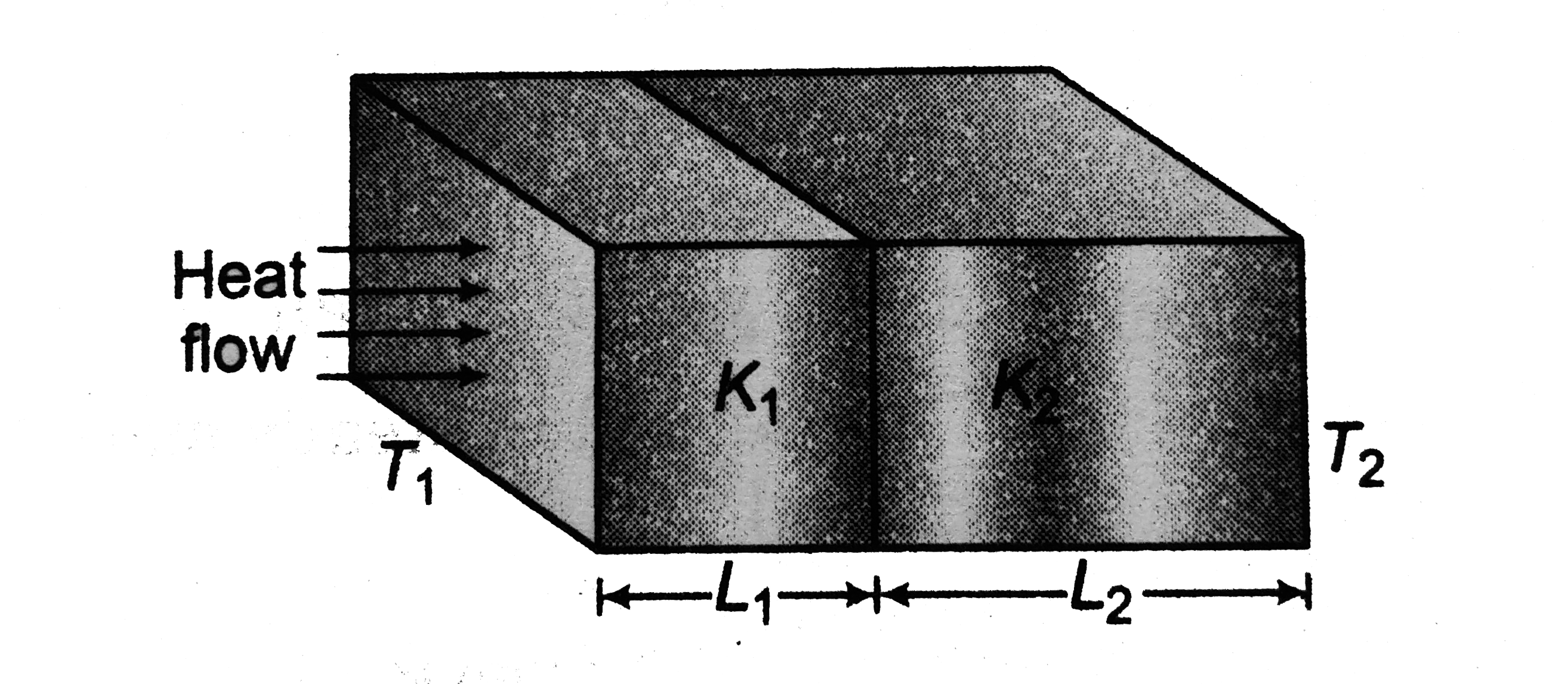
(a) rate of flow of heat
(b) temperature of interface and
(c) equivalent thermal conductivity. View SolutionQuestion 34
One end of a rod length 20cm is inserted in a furnace at 800K. The sides of the rod are covered with an insulating material and the other end emits radiation like a blackbody. The temperature of this end is 750K in the steady state. The temperature of the surrounding air is 300K. Assuming radiation to be the only important mode of energy transfer between the surrounding and the open end of the rod, find the thermal conductivity of the rod. Stefan constant σ=6.0×10−1Wm−2K−4 .View SolutionQuestion 35
Three rods of material x and three of material y are connected as shown in figure. All the rods are identical in length and cross sectional area. If the end A is maintained at 60∘C and the junction E at 10∘C , calculate the temperature of the junction B. The thermal conductivity of x is 800Wm−1.∘C−1 and that of y is 400Wm−1.∘C−1 .
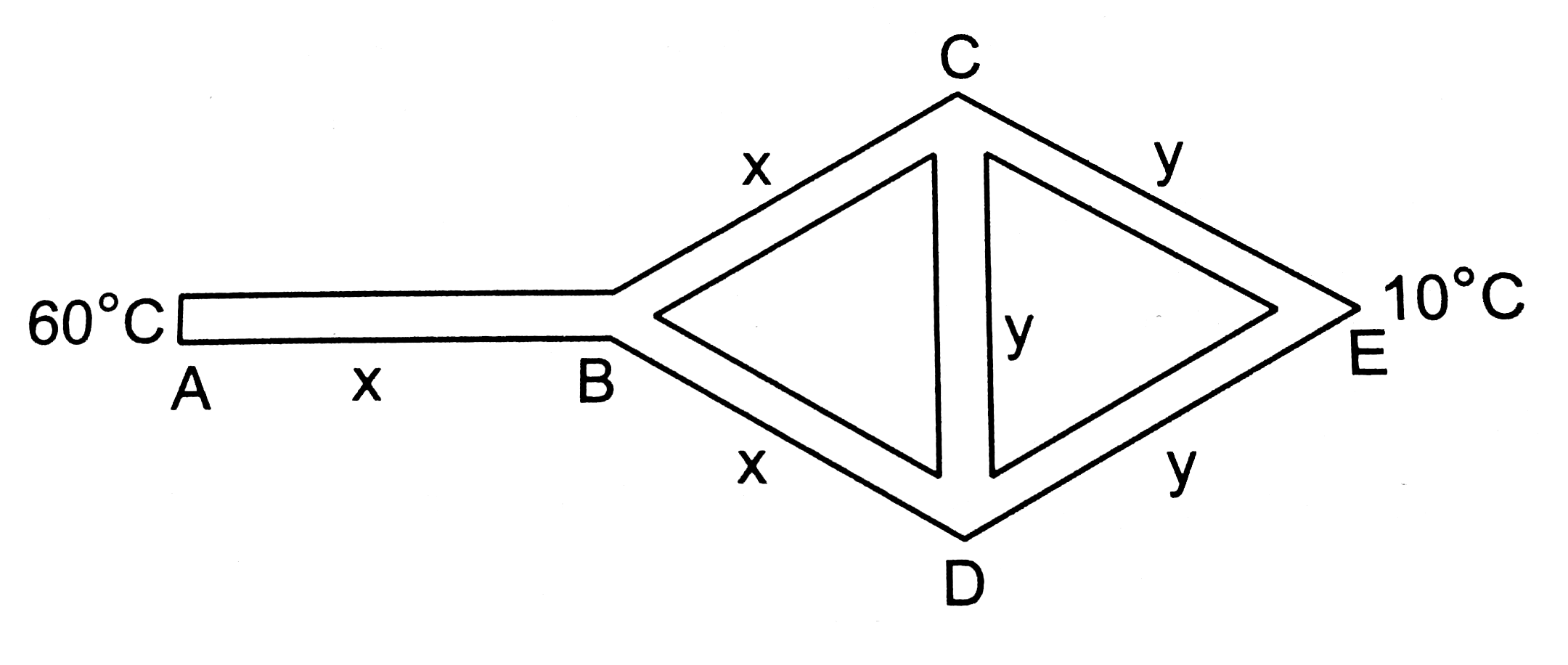 View Solution
View SolutionQuestion 36
A hollow sphere of glas whose external and internal radii are 11 cm and 9 cm respectively is completely filled with ice at 0∘C and placed in a bath of boiling water. How long will it take for the ice to melt completely? Given that density of ice = 0.9g/cm3, latent heat of fusion of ice =80cal/g and thermal conductivity of glass =0.002cal/cm−s∘C.View SolutionQuestion 37
A point source of heat of power P is placed at the centre of a spherical shell of mean radius R. The material of the shell has thermal conductivity K. If the temperature difference between the outer and inner surface of the shell in not to exceed T, the thickness of the shell should not be less than .......View SolutionQuestion 38
A steam cylindrical pipe of radius 5 cm carries steam at 100∘C . The pipe is covered by a jacket of insulating material 2 cm thick having a thermal conductivity 0.07 W/m−K . If the temperature at the outer wall of the pipe jacket is 20∘C , how much heat is lost through the jacket per metre length in an hours?
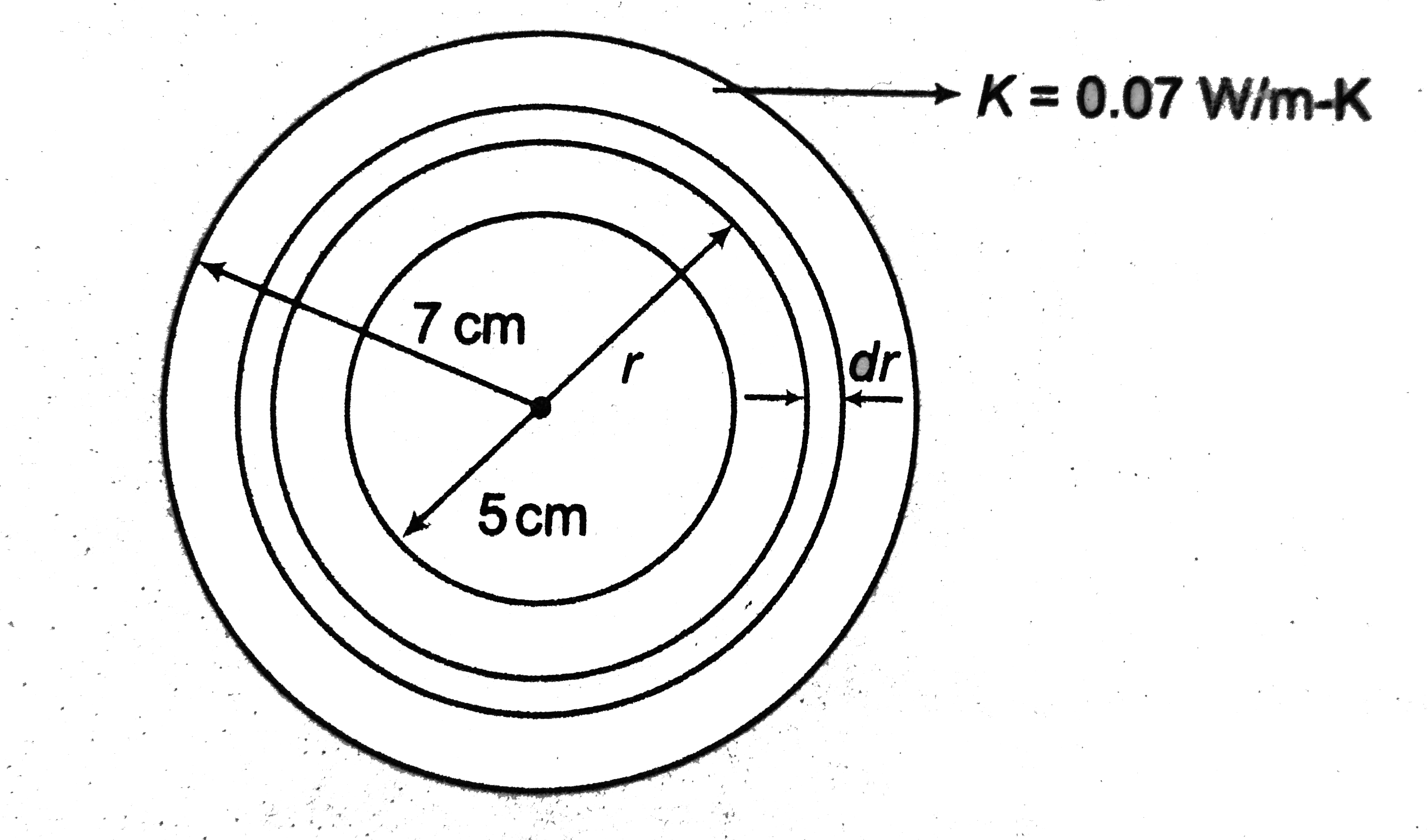 .View Solution
.View Solution

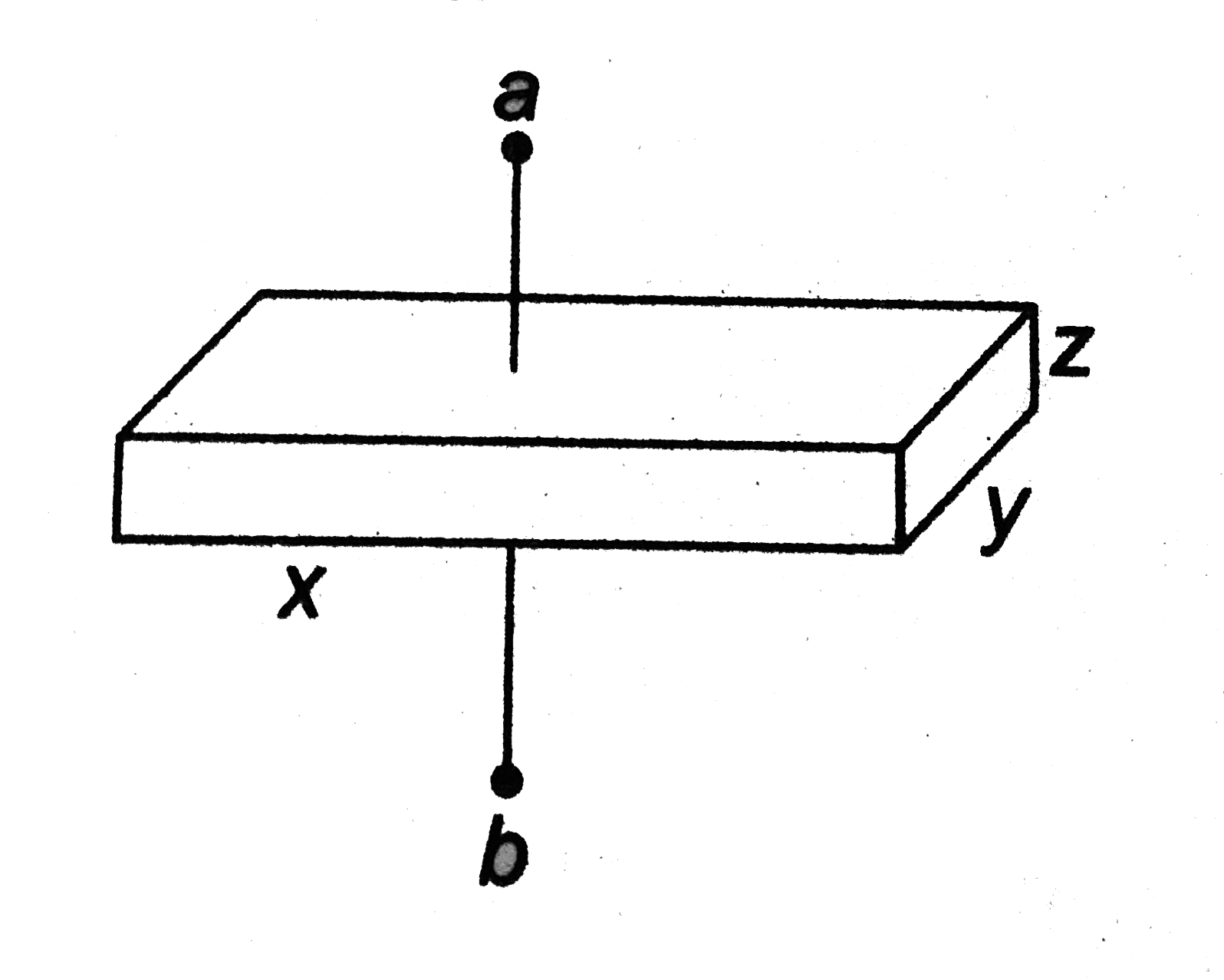 .
. 